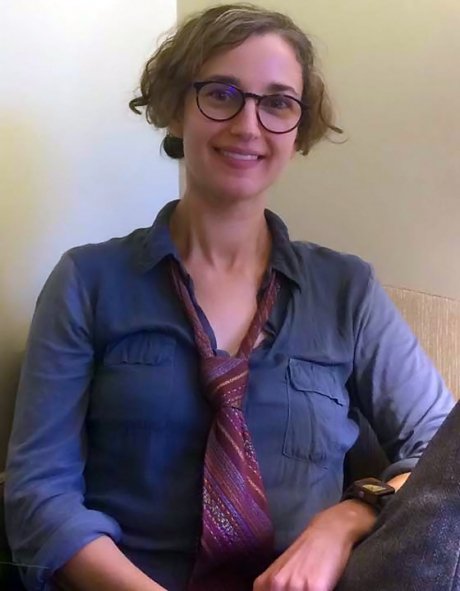Post-COVID Mental Health Challenges in Campus Life
- News & Events
- News
- Post-COVID Mental Health Challenges in Campus Life

RIC faculty, staff and students are transitioning back to face-to-face interactions on campus. But what is the healthiest way to return to “normal”?
According to psychologist Julia Kamenetsky of RIC’s Counseling Center, “There is no right or wrong way to make that transition.” Some people are going to streak out the door of their self-imposed isolation. “These are people who feel like ‘I am so beyond done with all of this, with all the precautions, I just can’t wait to get back to something that looks like my life before,’” she says. “For them, jumping in is the best thing.”
“But for other people, jumping in would be a shock to the system. A more gradual re-introduction is needed. Like adjusting to an icy cold river, some people may need to dip their toes in first,” she says. “The next day, they’ll hold their toes in a little longer. Then the whole foot. Then the ankle. They need to become acclimated.”
Though we’d all like to bring back as much of our lives that existed before the pandemic as we can, we would be wise to heed the words of Heraclitus, who once said, “No man ever steps into the same river twice, for it’s not the same river and he’s not the same man.”
“There are people who are returning to campus who lost someone to COVID,” Kamenetsky says. “We’re coming back bereaved. We’re coming back shellshocked. There are people who contracted COVID and are still suffering the effects of that. And all of this will be invisible to the onlooker.”
“That is why, as a community, it is our responsibility to make an effort to allow everyone to check in and talk about how they are doing and what they need,” she says. “We need to do more than ask people if they’ve been in contact with someone with COVID or traveled outside the country. We need to allow them the space to process what they are going through – not for a week, not for a month but as a daily, integrated part of campus life.”
Often there is a delayed reaction to trauma, she says. Months or years may pass before the effect of a trauma is truly felt. Moreover, people express trauma in different ways.
“Some people may numb their bodies and their feelings through substances or by disconnecting from their feelings,” she says. “Others may avoid people, places and things that might be connected, resemble or remind them of the trauma. For others it’s the opposite. They will rush back to the site of the trauma as a way of un-traumatizing themselves.”
“Trauma is also expressed through hypervigilance, hyperawareness,” Kamenetsky explains. “Someone might sneeze and they will think, ‘That person just sneezed. Yes, they were 20 feet away, but I’m still really worried. Or that person is standing very close to me. Yes, they’re wearing a mask, but have they been vaccinated? Or that person’s mask just slipped underneath their nose. I’m feeling unsafe.’
Through it all, the important thing is to listen to what your body and mind are saying, she says, and ask yourself, “What can I do to take care of myself and how can I communicate what I need to others?” No one should feel alone or ashamed of what they are feeling, she says.
“As human beings, we can get injured physically and we can get injured emotionally. Trauma is an emotional injury. And it doesn’t occur because we’re weak in some way. It occurs because we’re human,” she says. “The effects of this pandemic are going to reverberate throughout history. We’re going to continue to grapple with what it all meant and how it affected our lives for many years to come.”
